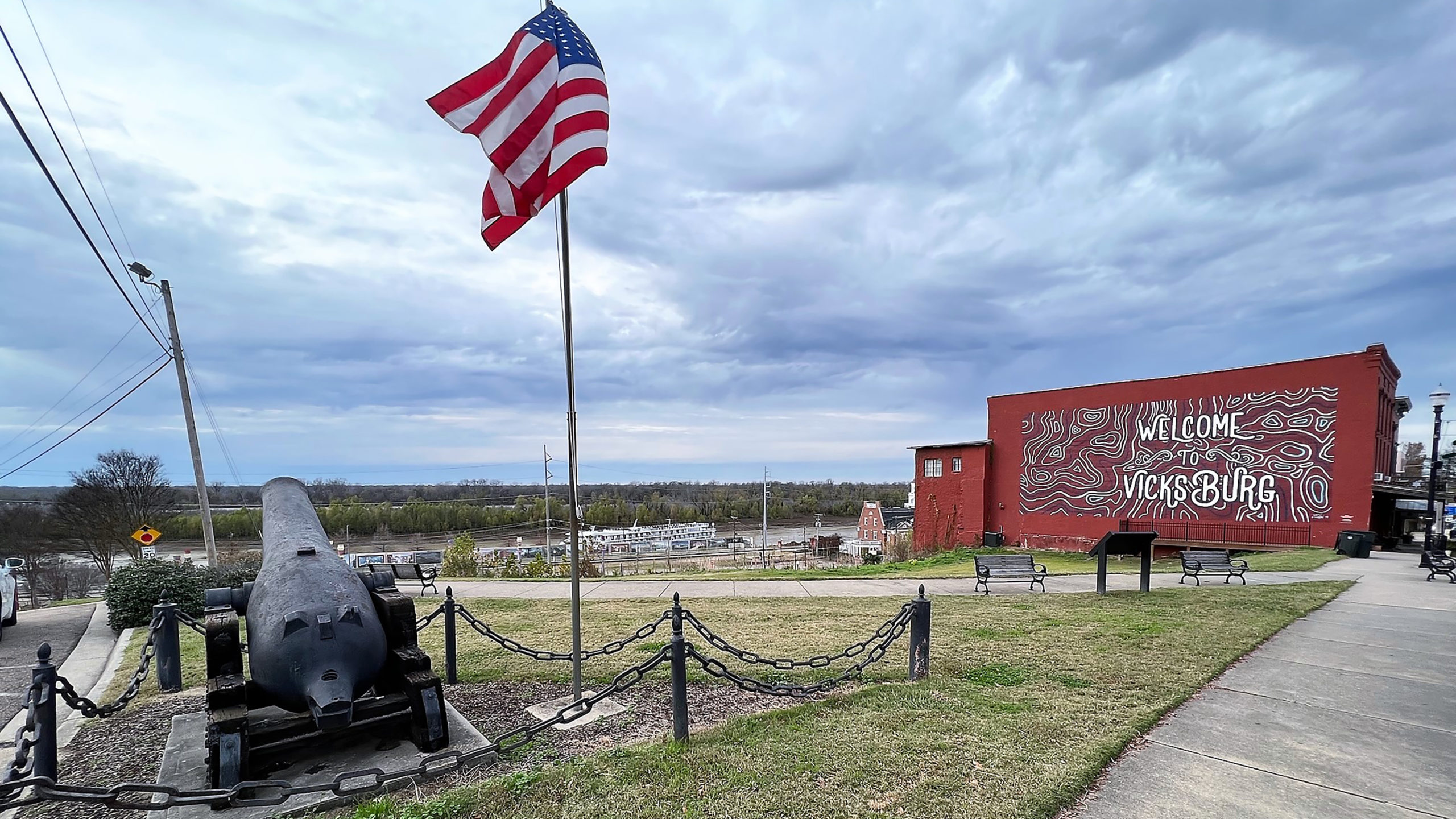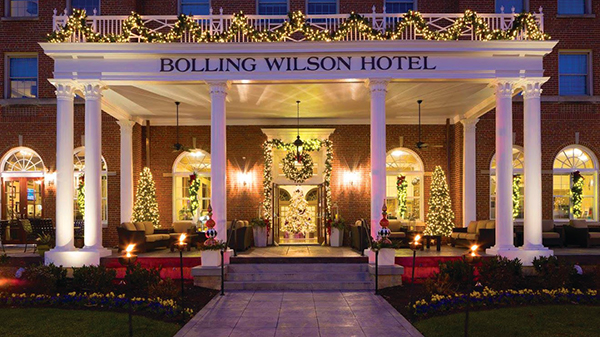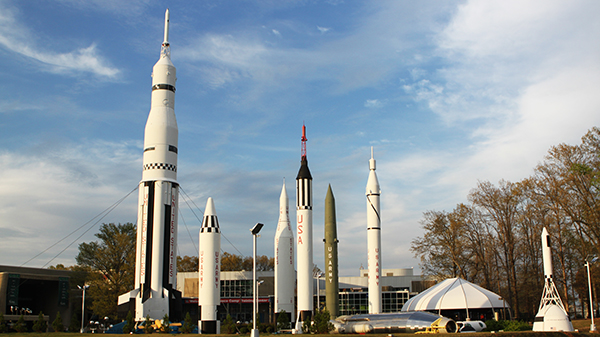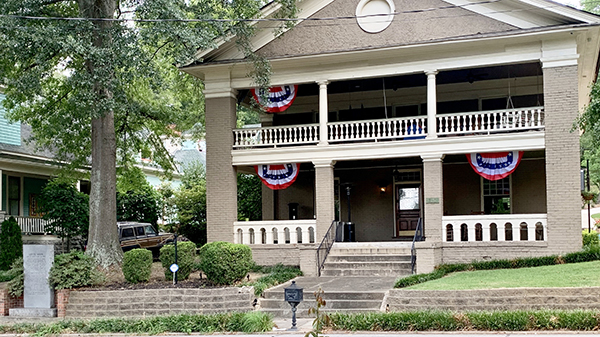Dig into the history of Vicksburg, Mississippi, and you will discover that the sheer resilience and determination to survive shown by the townspeople deserve admiration and an investment of time to check out what they offer for visitors. It is a miracle they are still on the map.
Because of its strategic location on the Mississippi River, Vicksburg was a coveted prize for the Confederacy that Union troops desperately wanted. The tug of war for control culminated in a 47-day siege by Union troops and surrender by Confederate generals on July 4, 1863.
Vicksburg and its people were exhausted, emotionally and physically wounded, starving and totally humiliated. They had the formidable task ahead of rebuilding their demolished, shell-ravaged town under terrible circumstances with scarce resources. They did not celebrate the Fourth of July with the rest of the country until the end of World War II in 1945.
During its slow climb back to being a viable town, the unthinkable happened. On April 26, 1876, the Mississippi River changed its course overnight. Suddenly Vicksburg lost its port. It was left high and dry in one day’s time. The Army Corps of Engineers arrived to help, but it would be 25 years before Vicksburg had access to the Mississippi River again via the Yazoo River.
In 1878, a yellow fever epidemic swept across the United States, hitting Mississippi with more than 4,000 deaths, 1,149 of which were in Vicksburg.
In April of 1927, levees along the Mississippi River broke after weeks of heavy rains. In Vicksburg, the river crested at 56.2 feet and swelled to a width of nearly 80 miles. It took a couple of months for the waters to completely recede, and hundreds began rebuilding their homes and lives once again.
Is there any wonder that Vicksburg people are loyal to their town and committed to making it strong and vital? In addition to the fact that they survived the past 160 years, I found many other reasons to recommend a visit.
Lovely accommodations with rich history
If you prefer a chain hotel, you will find about 20 from which to choose. But why stay in a predictable place when you can spend the night in a home with charming hosts and historical significance?
Anchuca, built in the late 1820s and best known as the home of Joseph E. Davis, the brother of Jefferson Davis, has a variety of accommodations from single rooms to two-bedroom suites and a three-bedroom guesthouse. A full breakfast is served in the Garden Room, and an on-site restaurant serves dinner Monday through Saturday and brunch on Sunday.
The Duff Green Mansion was spared from destruction during the Civil War when it was designated as a hospital for Union and Confederate troops. Both Jefferson Davis and Ulysses S. Grant once danced in its ballroom. There are eight guest rooms, and a three-course breakfast is served in the formal dining room.
Oak Hall, built in 1910, was formerly known as Stained Glass Manor but is under new ownership and a new name. Guest rooms are huge, and the stained-glass windows are stunning. A continental breakfast is delivered to your room on weekdays, while a hot breakfast is served on weekends.
Wonderful dining choices
The Tomato Place started out as a series of vegetable stands along Highway 61, but eventually merged into one larger stand now famous for its fresh tomato sandwiches. Locals and visitors drive from miles around to this rustic place that serves surprisingly good food. My personal favorite was the Fried Green Tomato BLT, but you can also order Po’boys, catfish, ribs, burgers, soups, salads and hot dogs.
Walnut Hills Restaurant is in a home built in 1880. Its most famous dish is fried chicken with a touch of cayenne pepper, but Walnut Hills also serves great seafood, Southern-style sides, and incredible housemade desserts.
Beechwood Restaurant & Lounge started serving customers in 1956, and ownership has passed from uncle to nephew to uncle to nephew ever since. Steaks are the undisputed stars of Beechwood’s menu, but their seafood dishes are outstanding as well.
Interesting attractions
As contemporary historians and others debate various issues related to the Civil War and their impact today, Vicksburg National Military Park has wisely turned the focus toward the art on display inside the park, and their Art of Commemoration Tour is highly recommended. A guide gets in his car, you get in your own vehicle and communication and commentary take place via Bluetooth connection. You will hear memorable stories, see amazing monuments and stop along the route to get closer looks. With its 1,400 monuments, this park is often called “The Art Park of the World.”
If possible, take a walking tour of several blocks in Vicksburg’s historic district led by Bertram and Carol Hayes-Davis. He happens to be the great-great-grandson of Jefferson Davis, and his stories are passionate and insightful. They own Vicksburg Old Town Tours. Be sure to reserve a spot early, because approximately 400 riverboats stop in Vicksburg each year. The walking tours are popular with those visitors.
Carrying on the art emphasis in Vicksburg, allow time to explore the downtown area. The Vicksburg Riverfront Murals, depicting noteworthy events in town, grace an area along the Yazoo Diversion Canal where the riverboats dock. By walking the main thoroughfare of Washington Street, you will find attractive boutiques, art galleries and several museums including Biedenharn Coca-Cola Museum in the building where Coke was first bottled.
Vicksburg’s resilience is admirable, its art impressive, its historic inns stunning and its regional delicacies delicious. The city’s people would love to show off their town. I highly recommend a visit.
EDITOR’S NOTE — Go, Taste & See is a regular travel feature in The Alabama Baptist, highlighting cities and destinations within a day’s drive of most of Alabama and offering suggestions from Hartselle-based travel writer Connie Pearson, who previously served as a missionary to Ecuador. 






Share with others: